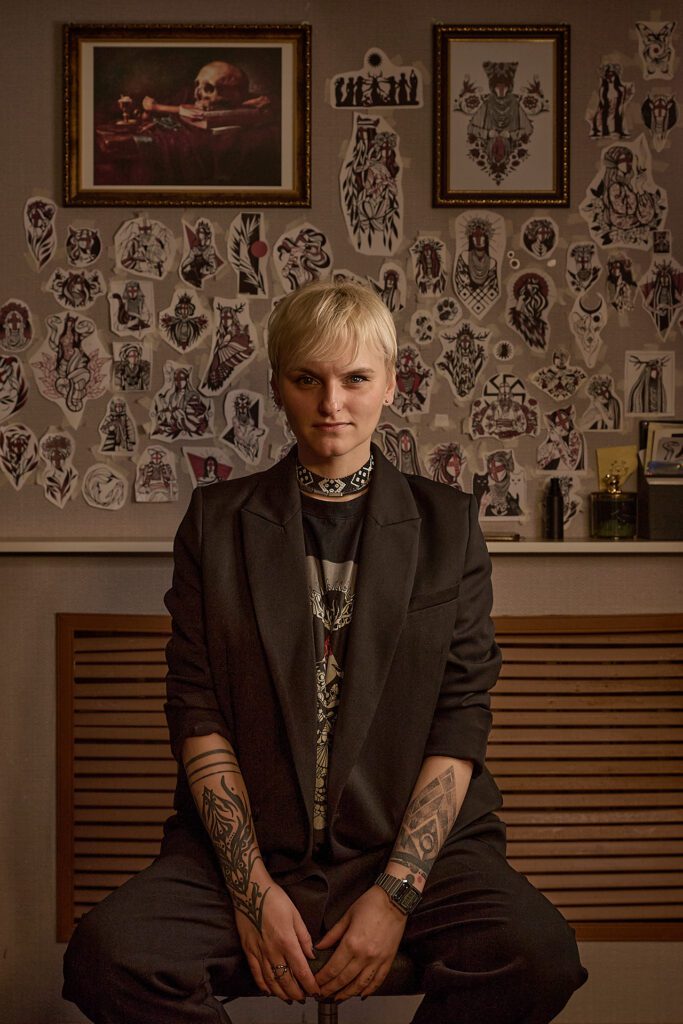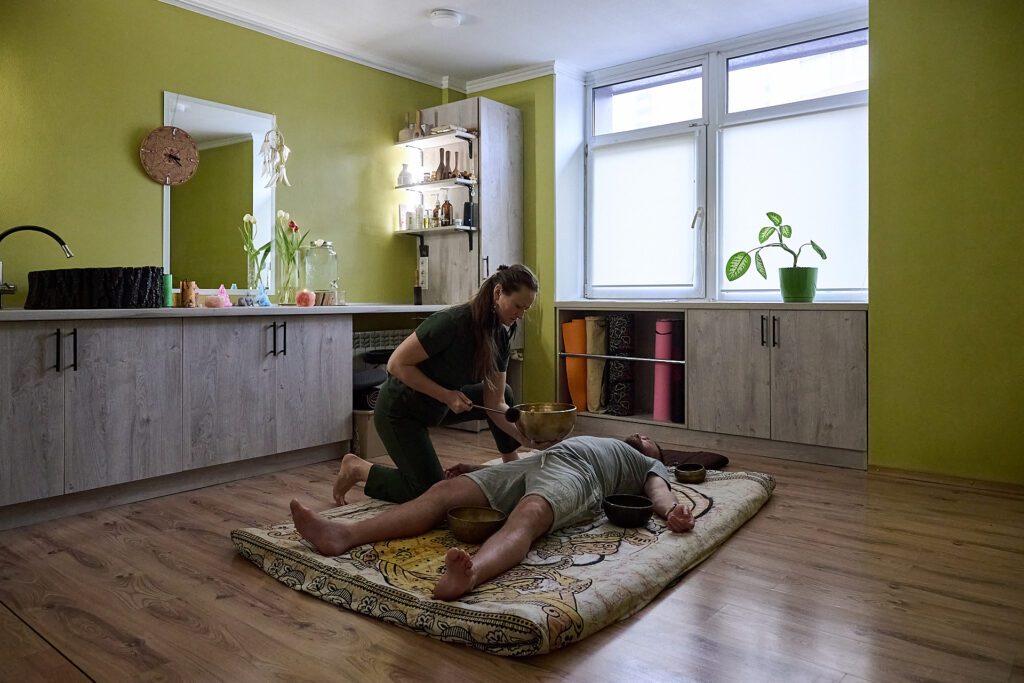The Meaning of Vyshyvanka in Wartime Ukraine is more than a national costume — it is a living emblem of survival, stitched with memory, belief, and defiance. As Russia attempts to erase Ukrainian culture through violence and occupation, this embroidered shirt has become a quiet but powerful act of resistance. In cities under siege and communities in exile, Ukrainians are turning to their traditional garments not just to remember who they are — but to declare it, boldly, in thread.
“Every stitch is a refusal to be erased.”
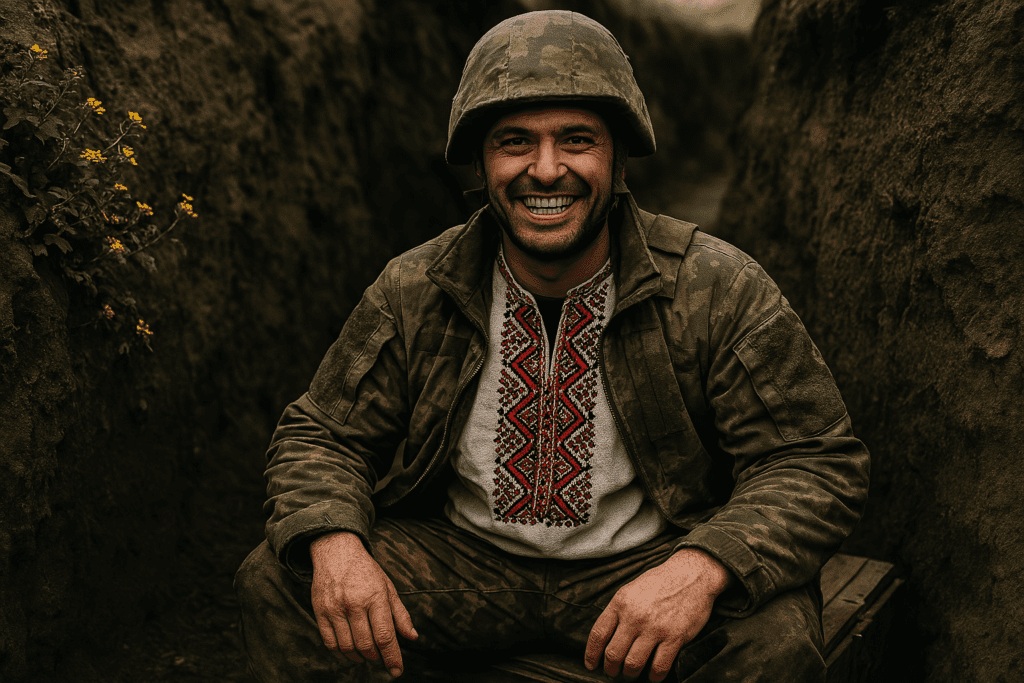
The Thread That Survives Bombs
In a time of missile strikes, blackouts, and displacement, the vyshyvanka has transformed into more than just folk art. Once worn to celebrate holidays and ancestry, it has become a form of symbolic armor. Soldiers wear them beneath their body armor. Mothers send sons to the front with them. Refugees cross borders clutching embroidered shirts like relics.
From the trenches near Bakhmut to exile marches in Berlin, the vyshyvanka is being reclaimed not as nostalgia but as resistance.
“The vyshyvanka is not about the past. It’s about surviving the present.”
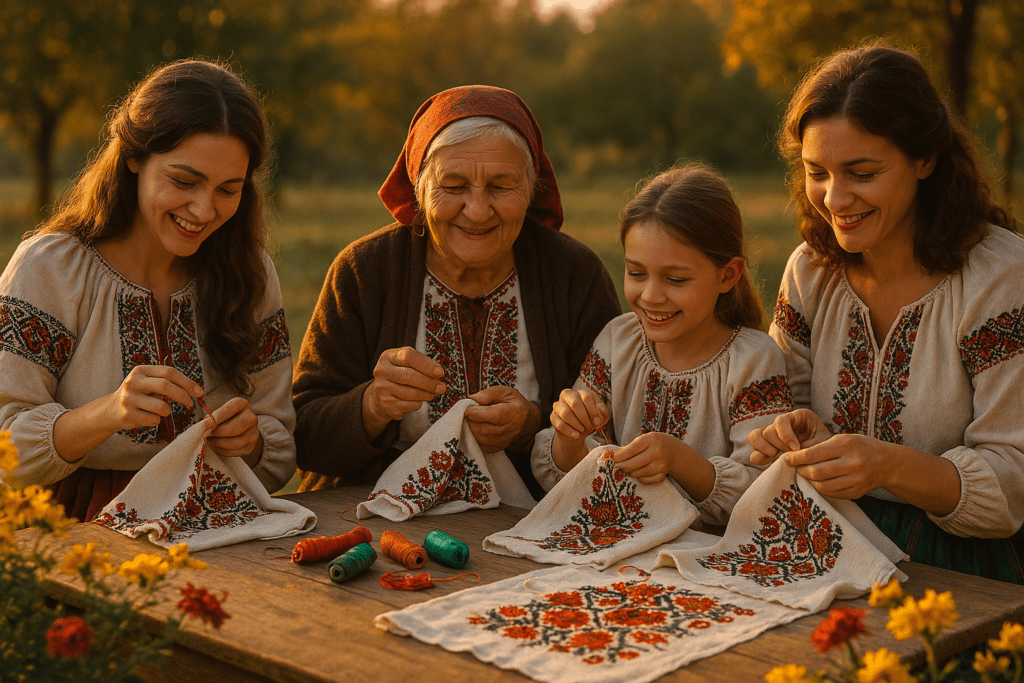
Ancient Patterns, Eternal Meaning
Vyshyvankas have existed in Ukraine for over a millennium. Archaeological finds show embroidered garments from as early as the 5th century. Designs vary by region, but every pattern carries meaning. Traditionally, red threads symbolized life and love, while black signified sorrow and memory.
Motifs — spirals, crosses, wheat, birds — were more than decorations. They were spiritual codes. Embroidery around the cuffs, neck, and hem was believed to protect the body’s openings from evil forces.
In times of peace, these shirts marked celebration. In war, they serve as both a protective charm and a declaration of who the wearer is.

From Heritage to Resistance
Russia’s full-scale invasion of Ukraine in 2022 reignited an old war over language, culture, and identity. Occupiers burned Ukrainian books, shut down cultural centers, and attempted to replace history with propaganda.
In this climate, simply wearing a vyshyvanka is a challenge to Russian imperialism.
On Vyshyvanka Day 2022, President Volodymyr Zelenskyy wore a stark black shirt embroidered in traditional Trypillia motifs. It was not a fashion choice. It was a visual message to Ukrainians: hold the line, hold the culture.
“You can occupy land. You cannot occupy a soul that remembers.”
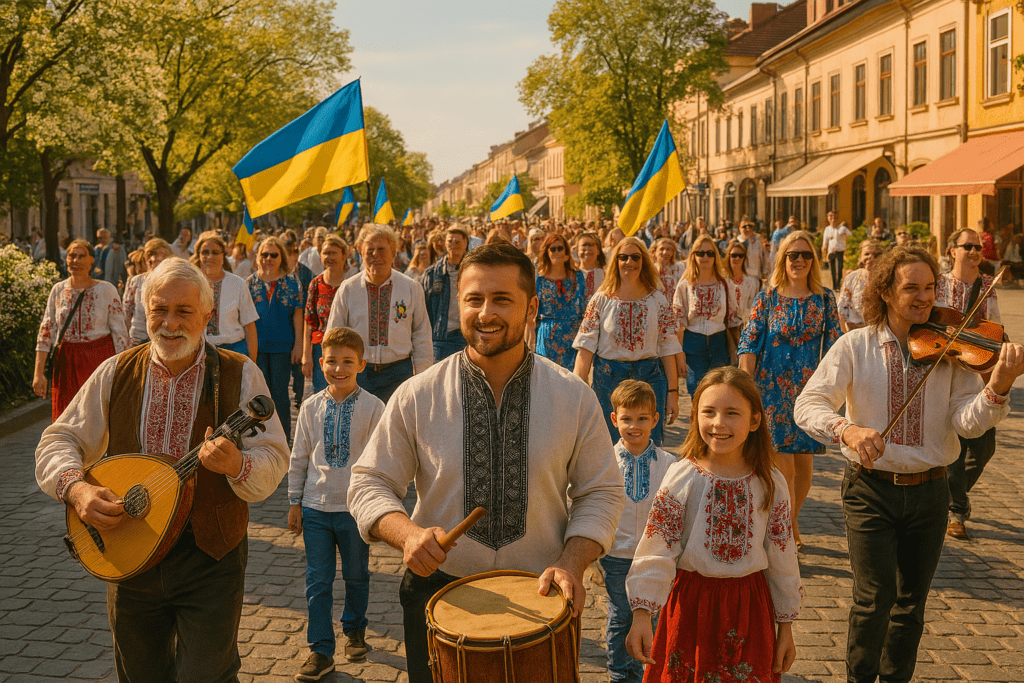
Vyshyvanka Day in Wartime
Every third Thursday in May, Ukrainians celebrate Vyshyvanka Day — a holiday born in 2006 that now spans continents. Before the war, it was festive and folkloric. Today, it is solemn and unifying.
In 2023, images circulated of children wearing vyshyvankas in bomb shelters. In London, Paris, and Warsaw, diaspora communities marched in embroidered shirts, carrying portraits of loved ones lost in the war.
Even on the frontlines, Ukrainian soldiers paused to take photos wearing their vyshyvankas over camouflage — a moment of peace stitched into war.
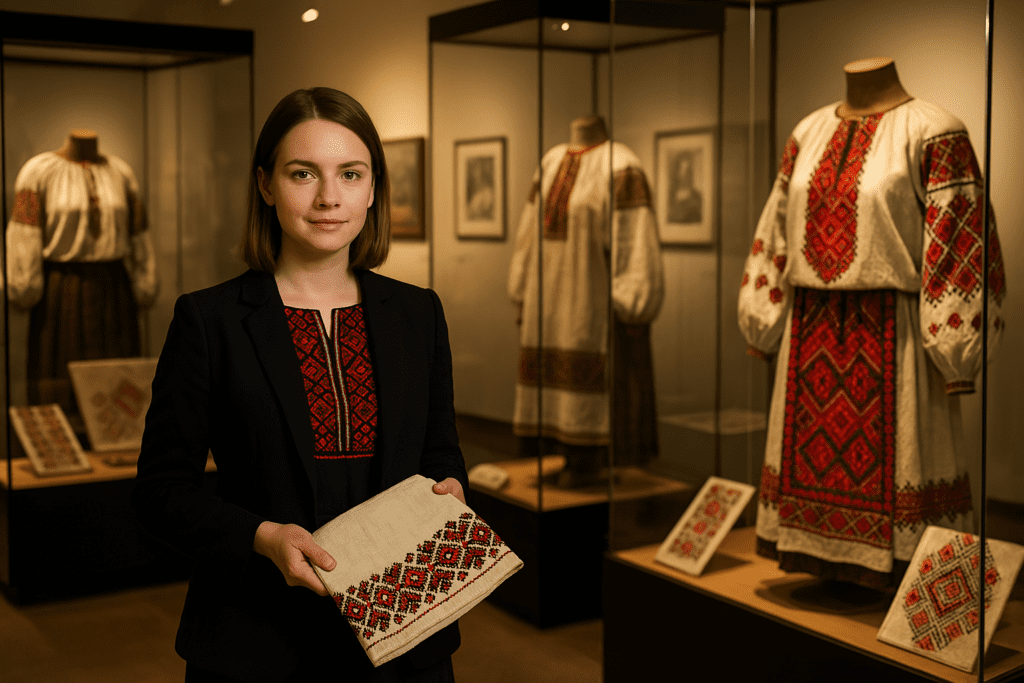
Russia’s War on Culture
Russia has spent centuries trying to erase Ukrainian identity:
- In 1876, the Ems Ukaz banned Ukrainians from publications and education.
- In the 1930s, Stalin’s regime murdered thousands of Ukrainian intellectuals during the Holodomor.
- Today, Russian missiles target museums, libraries, and historical archives.
Against this long history of erasure, Ukrainians are preserving what they can — sometimes at great personal risk. When volunteers in Kharkiv smuggled ancient vyshyvankas out of a shelled village and into safety in Chernivtsi, they weren’t just saving garments — they were rescuing memory.
“In war, the vyshyvanka isn’t just heritage. It’s armor.”
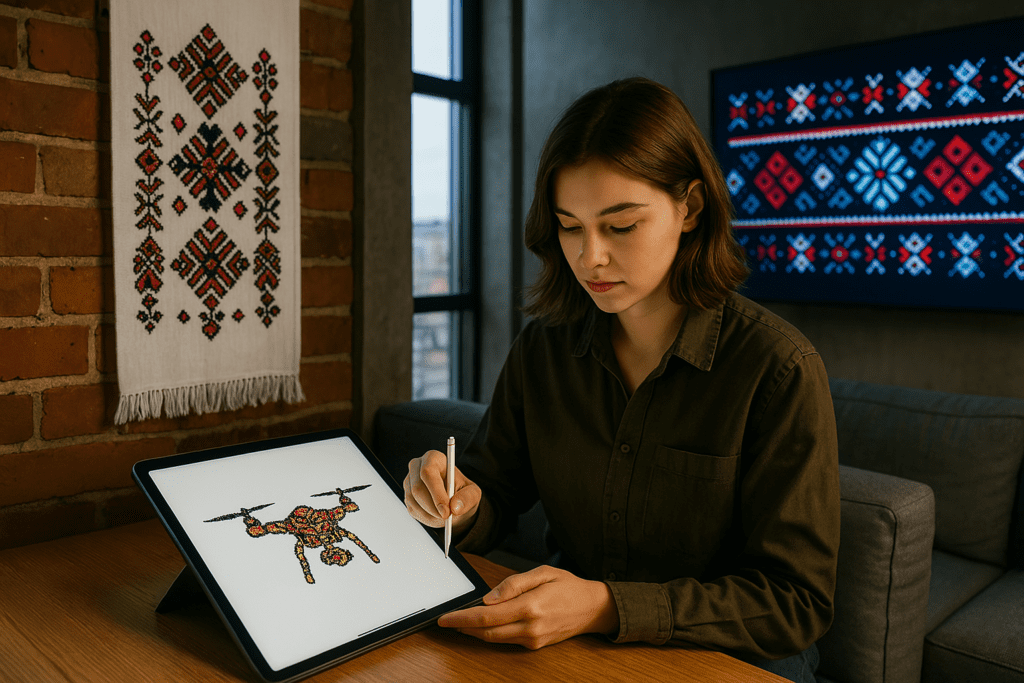
Digital Threads and Modern Meaning
Young Ukrainians are fusing tradition with innovation. Designers remix old patterns with wartime symbols — drones, barbed wire, phoenixes — creating a new language of embroidery for a nation fighting for its soul.
Streetwear labels like KOLO and Etnodim bring vyshyvanka into modern fashion. Digital artists create embroidered NFTs to raise money for the army.
On TikTok and Instagram, women show off shirts sewn for their brothers on the frontlines. These aren’t aesthetic choices. They’re acts of love, protection, and defiance.
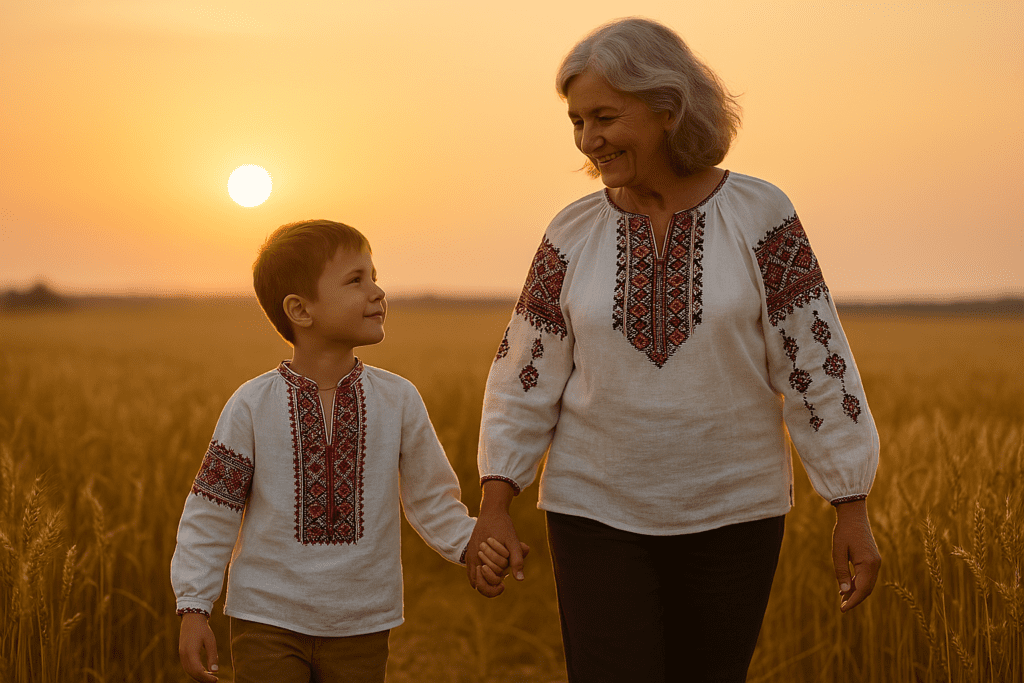
Not Costume — Identity
The meaning of the vyshyvanka in wartime Ukraine is layered, urgent, and alive. Worn to remember, to protest, to mourn, to hope.
Connecting past to present. It binds ancestors to the battlefield. reminding Ukrainians — and the world — that culture is not collateral. It is the core.
“This is not folk nostalgia. This is modern resistance in stitches.”
In this war, every embroidered shirt is a silent weapon. And every stitch is a stand. The Meaning of Vyshyvanka in Wartime Ukraine.





